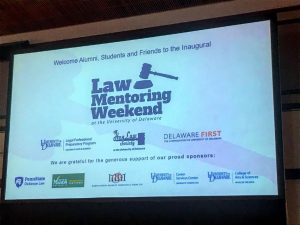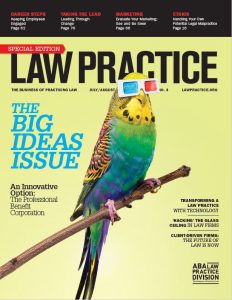LP Magazine – Profiting From Nonprofit Board Involvement
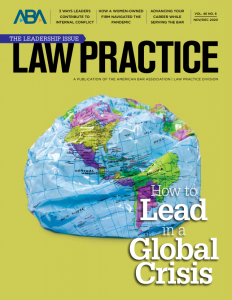 A favorite business development endeavor for many lawyers (me included) is involvement on a nonprofit board. It can be time-consuming, potentially expensive and sometimes frustrating, but it is a do-good activity that ideally is tied to an area of interest and passion. In my November/December 2020 marketing column in Law Practice, I write on Profiting from Nonprofit Board Involvement.
A favorite business development endeavor for many lawyers (me included) is involvement on a nonprofit board. It can be time-consuming, potentially expensive and sometimes frustrating, but it is a do-good activity that ideally is tied to an area of interest and passion. In my November/December 2020 marketing column in Law Practice, I write on Profiting from Nonprofit Board Involvement.
The heart of my column comes from conversations with leaders of BoardAssist, a nonprofit itself that matches prospective board members with nonprofits in the New York metropolitan area (including New Jersey and Connecticut). Cynthia Remec, the executive director and founder of BoardAssist, is a former attorney who started her career at Pillsbury Winthrop and Weil Gotshal. I also received valuable input from Richard Hall, a partner at Cravath, Swaine & Moore, and a longtime member of its board of directors.
Like many aspects of our lives, nonprofits are reeling in the midst of a pandemic where time, money and resources are hard to come by. For board members, there is the teeny, tiny silver lining of being able to conduct most of these meetings from the comfort of home. However, that in-person human interaction is lost. And I’ve heard a number of people lament that they miss the free snacks at meetings. I, myself, will trade sitting at home in sweats and buying a box of munchkins out of pocket. But, seriously, it is true that removing the travel element (sometimes involving getting on a plane) can make donating your time simpler and easier. Bottom line—nonprofits need us to step up now, more than ever.
 Marketing Attorney Blog
Marketing Attorney Blog


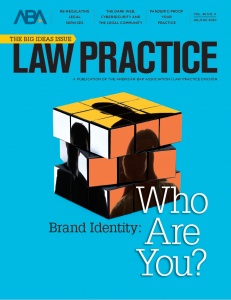 My annual
My annual 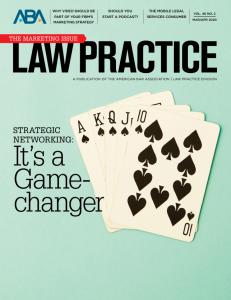 In preparing a recent pitch presentation to in-house counsel for a law firm client, I kept steering the attorneys to point out what was unique about them. There was the generic fluff—great client service, accolades of all kinds, alternative fee arrangements, a wonderful team of lawyers and staff, brand name clients, blah, blah, blah—none of which really made them much different than any other solid, competent law firm. The differentiators are in the substantive work product, and often, in what you give back to the community and the profession. Not every law firm does pro bono, but they should. In the March/April 2020 issue of the ABA Law Practice Magazine, I delve into
In preparing a recent pitch presentation to in-house counsel for a law firm client, I kept steering the attorneys to point out what was unique about them. There was the generic fluff—great client service, accolades of all kinds, alternative fee arrangements, a wonderful team of lawyers and staff, brand name clients, blah, blah, blah—none of which really made them much different than any other solid, competent law firm. The differentiators are in the substantive work product, and often, in what you give back to the community and the profession. Not every law firm does pro bono, but they should. In the March/April 2020 issue of the ABA Law Practice Magazine, I delve into 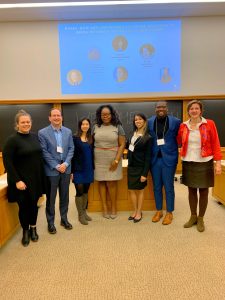
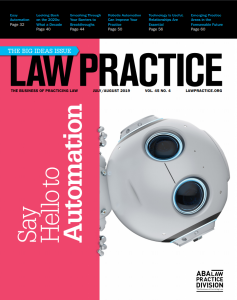 In the nearly 20 years that I’ve run my law marketing consultancy,
In the nearly 20 years that I’ve run my law marketing consultancy, 
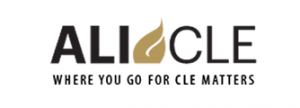 While the calendar year might not turn for another four months, the new “bar year” is here. Of course, for some of us, the New Year is now—with Rosh Hashanah falling days after my upcoming ALI webcast. It is a time of reflection and planning, and also atonement for the one or two sins that I may have somehow committed in the past year. This is a good time for evaluating your current business development efforts and determining which you’d like to continue or change in the coming year. Regardless of personal philosophy, your network is the centerpiece of business development. Many firms will now be asking you to figure out your BD plan for 2019, including budget requests. This is also one of the primary times of the year when lawyers put a little more effort into “non-billable” activity and involvement. I always say that the key periods are post-Labor Day until Thanksgiving; and again from post-New Year’s Day (the January 1st edition) until Memorial Day. We work most of our magic in those two sweet spots on the calendar.
While the calendar year might not turn for another four months, the new “bar year” is here. Of course, for some of us, the New Year is now—with Rosh Hashanah falling days after my upcoming ALI webcast. It is a time of reflection and planning, and also atonement for the one or two sins that I may have somehow committed in the past year. This is a good time for evaluating your current business development efforts and determining which you’d like to continue or change in the coming year. Regardless of personal philosophy, your network is the centerpiece of business development. Many firms will now be asking you to figure out your BD plan for 2019, including budget requests. This is also one of the primary times of the year when lawyers put a little more effort into “non-billable” activity and involvement. I always say that the key periods are post-Labor Day until Thanksgiving; and again from post-New Year’s Day (the January 1st edition) until Memorial Day. We work most of our magic in those two sweet spots on the calendar.